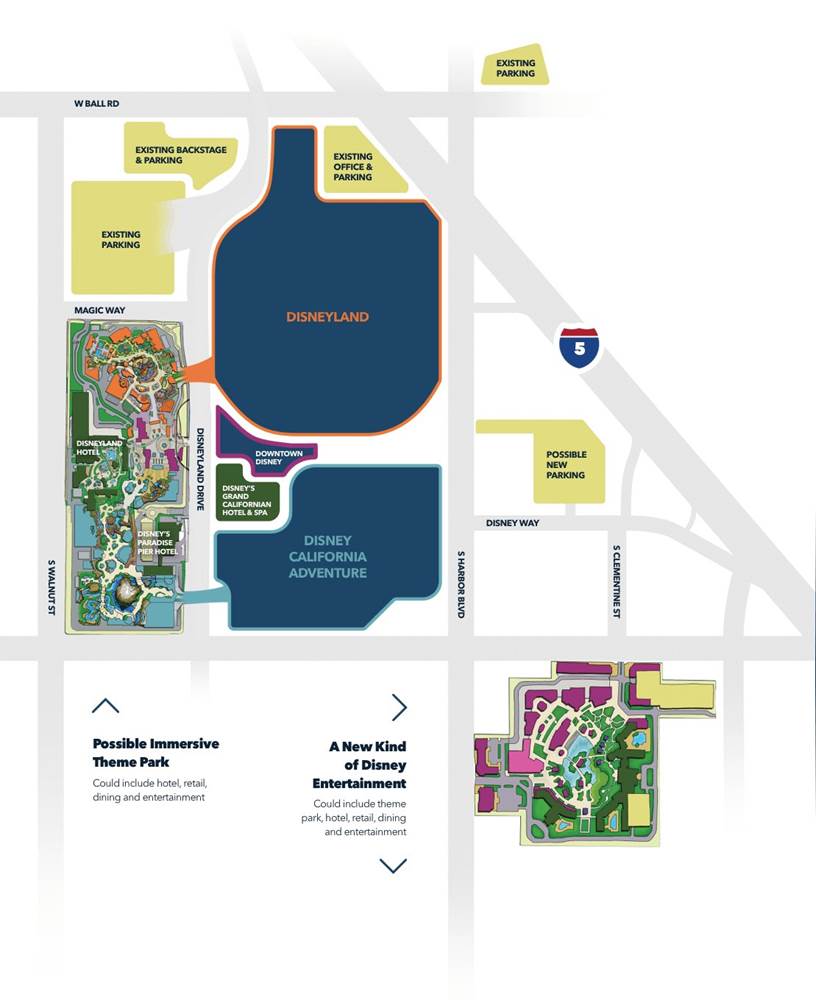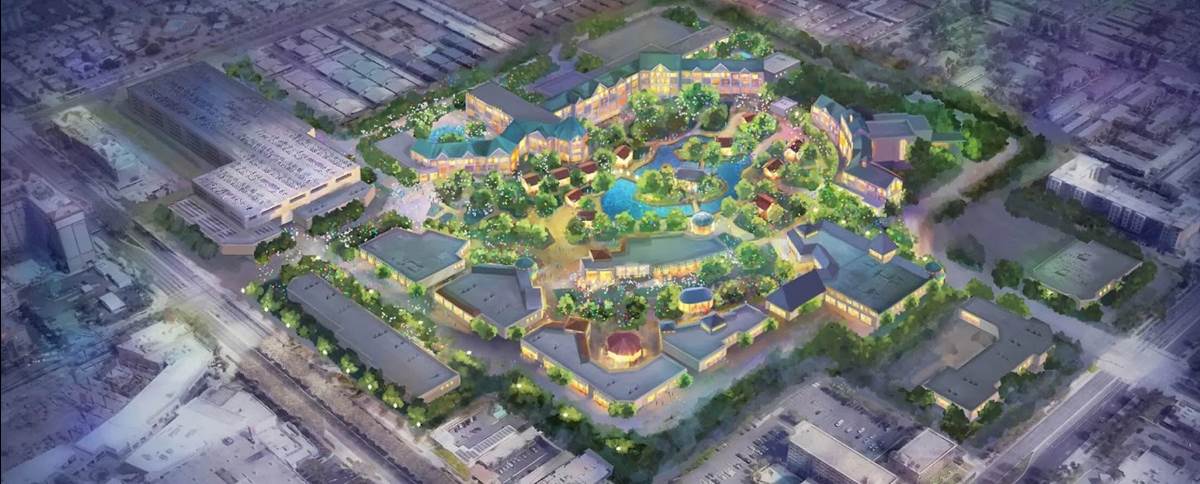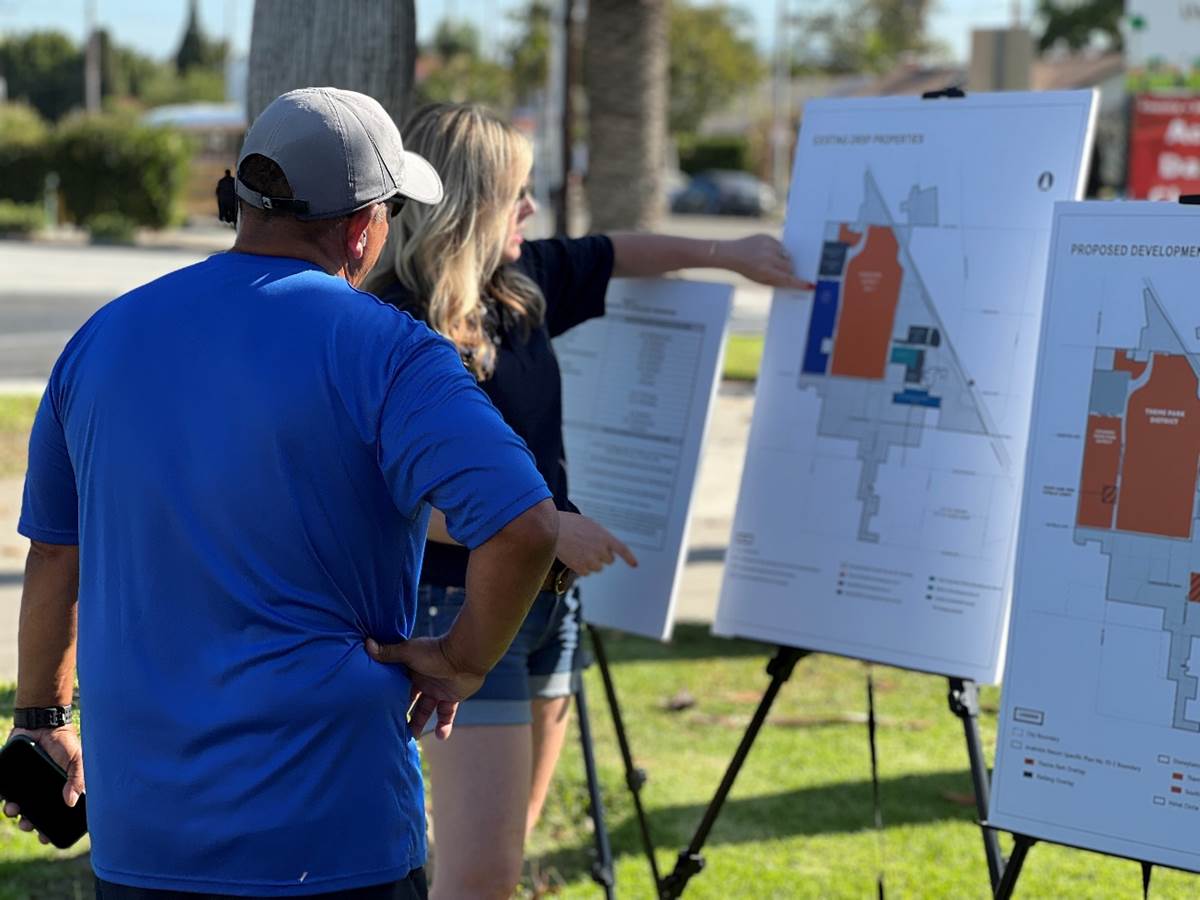Disneyland Continues Pitch to Grow and Invest
Through recent investor events, Bob Iger and Christine McCarthy have made it clear that they view their parks business as an engine of growth moving forward. And with a commitment to slowing the rate of ticket increases, the key to growth will be expansion — which should be music to the ears of Disney fans. But, that growth may come from a surprising place.
Bob Iger recently commented that there is a lot more room for Disneyland to grow than people might think. The key to this is the DisneylandForward project which is moving ahead with some key events expected next year. The idea, which happened to be announced while Disneyland Resort was closed in 2021, hopes to give Disneyland more flexibility in how they invest in Anaheim. It is important to note that DisneylandForward does not seek any public funding nor any increase in the amount of facilities they are authorized to build. The goal is to spread existing land-use approvals for additional theme park and hotel development throughout Disneyland Resort properties, allowing Disney to blend theme park, entertainment, shops, restaurants, and hotels into a more immersive experience.
Currently, the Disneyland Resort has only used 45% of their authorized theme park use. Disney is also authorized to build over 5,000 additional hotel rooms. By allowing theme park expansion into the current hotel district, they could expand Disneyland Park and Disney California Adventure over Disneyland Drive to remedy the park’s current land-locked situation.
The desire to expand is the result of an unbelievable rebound in the last few years. During the Disneyland Resort’s unprecedented closure, the impact to the city of Anaheim was significant. But now, Disneyland is employing more cast members than they did before the closure. The city has rebounded as well with Anaheim seeing bed tax revenues that also exceed pre-pandemic levels. In fact, according to Visit California, Orange County is California’s fastest growing tourism region
Disneyland Resort has already announced $2 billion in projects ranging from the Villas at the Disneyland Hotel to the new E-ticket experience coming to Avengers Campus. The Resort even plans to expand beyond that as the recently-announced Avatar experience was not included in that figure. But to grow even further, the Disneyland Resort and Walt Disney Imagineering have to get creative in how they continue to expand.
The main point of DisneylandForward is giving Disney flexibility in order to facilitate additional investment in their property. To share how the community would benefit, the Disneyland Resort recently hosted members of the Orange County community including Anaheim City Council Members, Natalie Meeks, Carlos Leon and Steve Faessel and City Manager, Jim Vanderpool. As part of the presentation Dr. Anil Puri, Provost Emeritus and Director of the Woods Center for Economic Analysis and Forecasting at California State University, Fullerton presented a high-level presentation on the economic impact of investment in Disneyland to the City of Anaheim and the State of California.
While Disneyland has already announced over $2 billion in investment across theme parks, hotels, and Downtown Disney, one of Dr. Puri’s scenarios looked at the impact of a $1 billion investment in additional theme park experiences. Under this scenario, Anaheim would see over 2,000 additional operational jobs and $15 million in additional tax revenue. This is an 8% increase compared to pre-pandemic levels. This is in addition to the over 1,000 construction jobs and $11 million in construction related tax revenue. Taking a broader view, the State of California would see over 3,500 operational jobs and $21 million in additional tax revenue. Construction impacts would include nearly 2,000 jobs and $66 million in revenue.
A full build-out of everything Disneyland is already entitled to 28,000 jobs in Anaheim and $244 million in additional revenue, not to mention additional construction related jobs and tax revenue. Full build-out could also result in over 41,000 jobs and almost $350 million in annual taxes for the state. While this would be many years down the road, it is eye-opening to see how ongoing investment in Anaheim could have a significant impact on the community.
Though we probably don’t need an expert to show that investing in Disneyland is good for the community, we do have history to back that up. If you compare hotel revenue, which drives Anaheim’s “bed tax," you can see the impact. Hotel revenue grew 36% when comparing the amount prior to the Resort Expansion to 2003 when the expansion was complete and the effects of 9/11 were over. From the time they announced the $1.1 reinvestment into California Adventure in 2007 until Cars Land opened in 2012, hotel revenue increased 18%. This does not even mention the economic impact of primary and secondary jobs as well as other revenue raised through increased economic activity. There were also less quantifiable impacts to Anaheim which includes the overall beautification of the Resort district as well as increased convention activity.
So what is next for DisneylandForward? The park is continuing to hold community events to get feedback from the community. We will soon get the draft environmental impact report that was commissioned by the city which would be followed by a public comment period. Then it would follow the typical city process which includes public workshops and a planning commission hearing before the proposal can be presented to Anaheim’s city council for a public hearing and possible adoption.
As was seen at this week’s city council meeting, which featured discussion on a union-backed hotel initiative, the constituents of Anaheim can be impassioned when discussing the future of the city’s tourism industry. After all, it is a key component of the city’s economy which differentiates it from its Orange County peers. Through the city’s bed tax (TOT), the city is able to fund city services by taxing non-residents.
While the relationship between the Disneyland Resort and the City of Anaheim has ebbed and flowed through the years, it is clear that the Disneyland Resort has sought to reset the relationship. Unlike other proposals, Disney is not seeking any public funds to support their investment. In a similar situation to what Disney is looking for in Florida, they are seeking the ability to build what they believe will best serve guests and their business. And while Disney’s investment in the parks business is currently lower than last year, the groundwork being laid here supports the recent comments by the leader of the Disney Parks business that they are looking to dream and invest in a big way.
Disney fans should be excited that the Disneyland Resort is undertaking this work to bring new experiences. Most of the criticism that Disney has faced in recent times have been related to the processes they have undertaken to manage their demand. But, as anyone who has taken high school economics can tell you, there are two ways to go when demand outpaces supply: you can raise prices or you can make more supply. In this case, more supply means more Disneyland. And who doesn’t want more Disneyland?
Disney is being very vague about what that investment will look like. Outside of some roadway changes and some non-specific jargon, we do not know how Disney expects to grow their existing parks nor what the new entertainment offering will look like. But to paraphrase Walt, “Everything may change time and time again as we move ahead, but the basic philosophy of what we’re planning is going to remain very much as it is right now. We know what our goals are. We know what we hope to accomplish. And believe me, it’s the most exciting and challenging assignment we've ever tackled"





